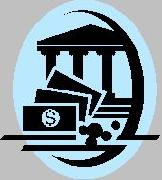
 |
|
| Financial Terms | |
| Exclusionary self-tender |
|
Information about financial, finance, business, accounting, payroll, inventory, investment, money, inventory control, stock trading, financial advisor, tax advisor, credit.
Main Page: credit, financial, payroll, money, finance, business, stock trading, inventory, |
Definition of Exclusionary self-tender
Exclusionary self-tenderThe firm makes a tender offer for a given amount of its own stock while excluding
Related Terms:Fixed-price tender offerA one-time offer to purchase a stated number of shares at a stated fixed price, Self-liquidating loanLoan to finance current assets, The sale of the current assets provides the cash to repay Self-selectionConsequence of a contract that induces only one group (e.g. low risk individuals) to participate. TenderTo offer for delivery against futures. Tender offerGeneral offer made publicly and directly to a firm's shareholders to buy their stock at a price Tender offer premiumThe premium offered above the current market price in a tender offer. tender offerTakeover attempt in which outsiders directly offer to buy the stock of the firm’s shareholders.  Self-Employment Contributions Act (SECA)A federal Act requiring self-employed business owners to pay the same total tax rates for Social Security and Arm's length priceThe price at which a willing buyer and a willing unrelated seller would freely agree to Ask priceA dealer's price to sell a security; also called the offer price. Back-to-back loanA loan in which two companies in separate countries borrow each other's currency for a Bargain-purchase-price optionGives the lessee the option to purchase the asset at a price below fair market Basis priceprice expressed in terms of yield to maturity or annual rate of return. Bid priceThis is the quoted bid, or the highest price an investor is willing to pay to buy a security. Practically Broker loan rateRelated: Call money rate. Builder buydown loanA mortgage loan on newly developed property that the builder subsidizes during the  Bullet loanA bank term loan that calls for no amortization. Call priceThe price, specified at issuance, at which the issuer of a bond may retire part of the bond at a Call priceThe price for which a bond can be repaid before maturity under a call provision. Cash offerA public equity issue that is sold to all interested investors. Clean priceBond price excluding accrued interest. Competitive offeringAn offering of securities through competitive bidding. Consumer Price Index (CPI)The CPI, as it is called, measures the prices of consumer goods and services and is a Conversion parity priceRelated:Market conversion price Convertible priceThe contractually specified price per share at which a convertible security can be Dealer loanOvernight, collateralized loan made to a dealer financing his position by borrowing from a Delivery priceThe price fixed by the Clearing house at which deliveries on futures are in invoiced; also the  Devaluation A decrease in the spot price of the currency
Dirty priceBond price including accrued interest, i.e., the price paid by the bond buyer. Dollar price of a bondPercentage of face value at which a bond is quoted. Dual syndicate equity offeringAn international equity placement where the offering is split into two Effective call priceThe strike price in an optional redemption provision plus the accrued interest to the Equilibrium market price of riskThe slope of the capital market line (CML). Since the CML represents the Equivalent loanGiven the after-tax stream associated with a lease, the maximum amount of conventional Exchange offerAn offer by the firm to give one security, such as a bond or preferred stock, in exchange for Exercise priceThe price at which the underlying future or options contract may be bought or sold. Fair market priceAmount at which an asset would change hands between two parties, both having Fair priceThe equilibrium price for futures contracts. Also called the theoretical futures price, which equals Fair price provisionSee:appraisal rights. Federal Home Loan BanksThe institutions that regulate and lend to savings and loan associations. The Fixed assetLong-lived property owned by a firm that is used by a firm in the production of its income. Fixed asset turnover ratioThe ratio of sales to fixed assets. Fixed costA cost that is fixed in total for a given period of time and for given production levels. Fixed-annuitiesAnnuity contracts in which the insurance company or issuing financial institution pays a Fixed-charge coverage ratioA measure of a firm's ability to meet its fixed-charge obligations: the ratio of Fixed-datesIn the Euromarket the standard periods for which Euros are traded (1 month out to a year out) are Fixed-dollar obligationsConventional bonds for which the coupon rate is set as a fixed percentage of the par value. Fixed-dollar securityA nonnegotiable debt security that can be redeemed at some fixed price or according to Fixed-exchange rateA country's decision to tie the value of its currency to another country's currency, gold Fixed-income equivalentAlso called a busted convertible, a convertible security that is trading like a straight Fixed-income instrumentsAssets that pay a fixed-dollar amount, such as bonds and preferred stock. Fixed-income marketThe market for trading bonds and preferred stock. Fixed price basisAn offering of securities at a fixed price. Fixed-rate loanA loan on which the rate paid by the borrower is fixed for the life of the loan. Fixed-rate payerIn an interest rate swap the counterparty who pays a fixed rate, usually in exchange for a Flat price riskTaking a position either long or short that does not involve spreading. Flat price (also clean price)The quoted newspaper price of a bond that does not include accrued interest. Freddie Mac (Federal Home Loan Mortgage Corporation)A Congressionally chartered corporation that Full priceAlso called dirty price, the price of a bond including accrued interest. Related: flat price. Futures priceThe price at which the parties to a futures contract agree to transact on the settlement date. General cash offerA public offering made to investors at large. High priceThe highest (intraday) price of a stock over the past 52 weeks, adjusted for any stock splits. Initial public offering (IPO)A company's first sale of stock to the public. Securities offered in an IPO are Intercompany loanloan made by one unit of a corporation to another unit of the same corporation. Inventory loanA secured short-term loan to purchase inventory. The three basic forms are a blanket Invoice priceThe price that the buyer of a futures contract must pay the seller when a Treasury Bond is delivered. Jumbo loanloans of $1 billion or more. Or, loans that exceed the statutory size limit eligible for purchase or Law of one priceAn economic rule stating that a given security must have the same price regardless of the Limit priceMaximum price fluctuation Loan amortization scheduleThe schedule for repaying the interest and principal on a loan. Loan syndicationGroup of banks sharing a loan. See: syndicate. Loan valueThe amount a policyholder may borrow against a whole life insurance policy at the interest rate Low priceThis is the day's lowest price of a security that has changed hands between a buyer and a seller. Low price-earnings ratio effectThe tendency of portfolios of stocks with a low price-earnings ratio to Limit priceMaximum price fluctuation Liquidating dividendPayment by a firm to its owners from capital rather than from earnings. Market conversion priceAlso called conversion parity price, the price that an investor effectively pays for Market price of riskA measure of the extra return, or risk premium, that investors demand to bear risk. The Market pricesThe amount of money that a willing buyer pays to acquire something from a willing seller, Marketplace price efficiencyThe degree to which the prices of assets reflect the available marketplace Maximum price fluctuationThe maximum amount the contract price can change, up or down, during one Minimum price fluctuationSmallest increment of price movement possible in trading a given contract. Also Multicurrency loansGive the borrower the possibility of drawing a loan in different currencies. Multifamily loansloans usually represented by conventional mortgages on multi-family rental apartments. Negotiated offeringAn offering of securities for which the terms, including underwriters' compensation, Nominal priceprice quotations on futures for a period in which no actual trading took place. OfferIndicates a willingness to sell at a given price. Related: bid Offering memorandumA document that outlines the terms of securities to be offered in a private placement. Opening priceThe range of prices at which the first bids and offers were made or first transactions were Option priceAlso called the option premium, the price paid by the buyer of the options contract for the right Parallel loanA process whereby two companies in different countries borrow each other's currency for a PIBOR (Paris Interbank Offer Rate)The deposit rate on interbank transactions in the Eurocurrency market Price/book ratioCompares a stock's market value to the value of total assets less total liabilities (book Price/earnings ratio (PE ratio)Shows the "multiple" of earnings at which a stock sells. Determined by dividing current Price/sales ratio (PS Ratio)Determined by dividing current stock price by revenue per share (adjusted for stock splits). Price compressionThe limitation of the price appreciation potential for a callable bond in a declining interest Price discovery processThe process of determining the prices of the assets in the marketplace through the Price elasticitiesThe percentage change in the quantity divided by the percentage change in the price. Price impact costsRelated: market impact costs Price momentumRelated: Relative strength Price persistenceRelated: Relative strength Price riskThe risk that the value of a security (or a portfolio) will decline in the future. Or, a type of Price takersIndividuals who respond to rates and prices by acting as though they have no influence on them. Priced outThe market has already incorporated information, such as a low dividend, into the price of a stock. Price value of a basis point (PVBP)Also called the dollar value of a basis point, a measure of the change in Pricesprice of a share of common stock on the date shown. Highs and lows are based on the highest and Price-specie-flow mechanismAdjustment mechanism under the classical gold standard whereby Related to : financial, finance, business, accounting, payroll, inventory, investment, money, inventory control, stock trading, financial advisor, tax advisor, credit. |